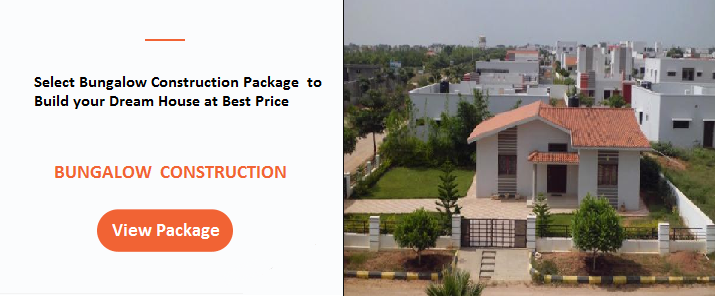The number of flooring options available today is numerous and when it comes to deciding which floor covering to choose for one’s own house or office building and the like, one is sure to be in a dilemma. The following article guides you on how to compare and contrast between three of the most commonly used flooring options available today.
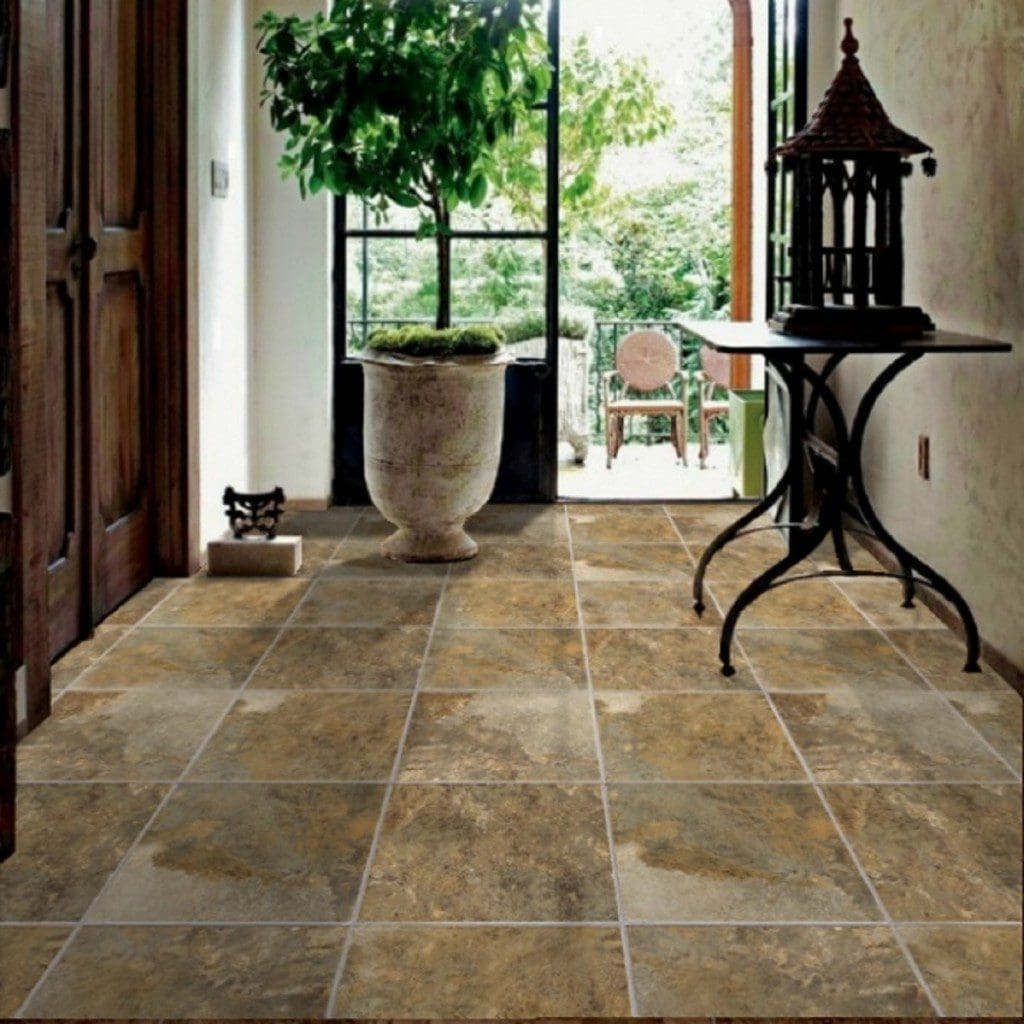
Vitrified tile, Granite and Italian Marble are three of the most preferred floorboard options because of innumerable merits that they have. Also, these flooring materials differ in terms of cost and quality, measure of minerals, fortitude against high temperatures, resistance to discolouration and scratches as well as potency and softness.
1. Vitrified Tiles as Flooring Material
It is a man-made ceramic tile, with low porosity, mostly used outdoors. They are of four major types: Soluble salt, double charge, full body and glazed.
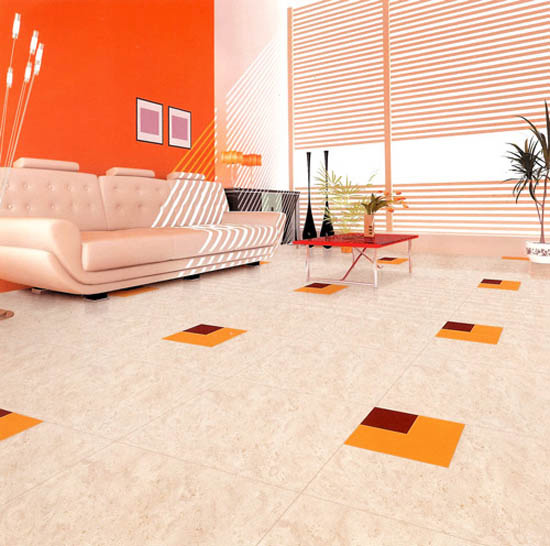
Advantages of Vitrified Tile Flooring
- Resistance to water and frost
- Easy availability in shops in huge quantities.
- Variations in sizes, shapes and patterns.
- Homogeny in size, hue and depth
- Great strength
- Vitreous facade, thus creating a single hard mass.
- The setting course is very simple and easy.
- Can be used within 48 hours of laying
- Prevent growth of bacteria and fungi due to moisture resistance
- Easy to clean
- Sunlight doesn’t cause them to fade.
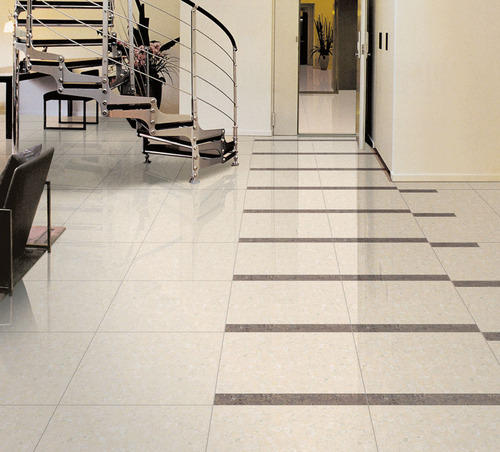
Disadvantages of Vitrified Tile Flooring
- Need to be taken care of to prevent flaking
- Are a tad too expensive as compared to the other floorboards.
- Need high quality adhesives for laying which only increases expense
- If one tile develops a defect, it must be cut away along the grout lines. This might damage the adjacent material.
- Are slippery when wet
- Not environment-friendly.
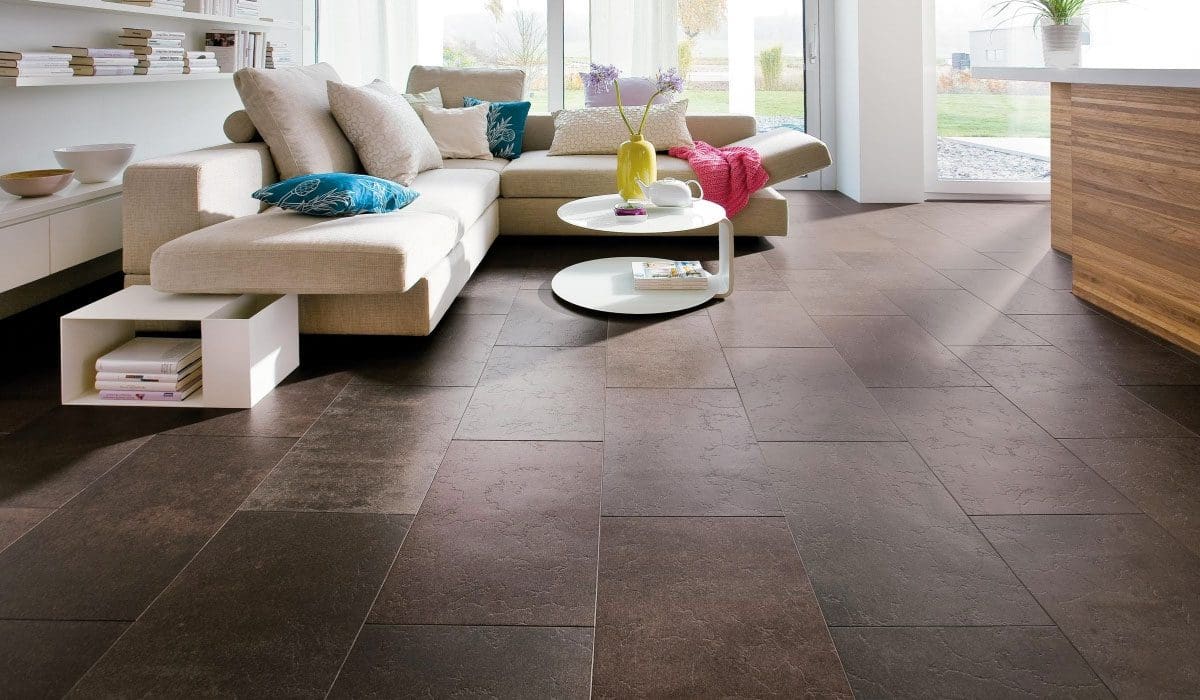
Vitrified tiles are in common use nowadays due to their custom decor and sleek finish. These tiles could be used in any part of your house and there will be no compromise on aesthetics. Vitrified tiles can be lent a highly polished finish, though too much polishing would not be a very safe option, especially for kids and for the aged.
2. Granite as Flooring Material
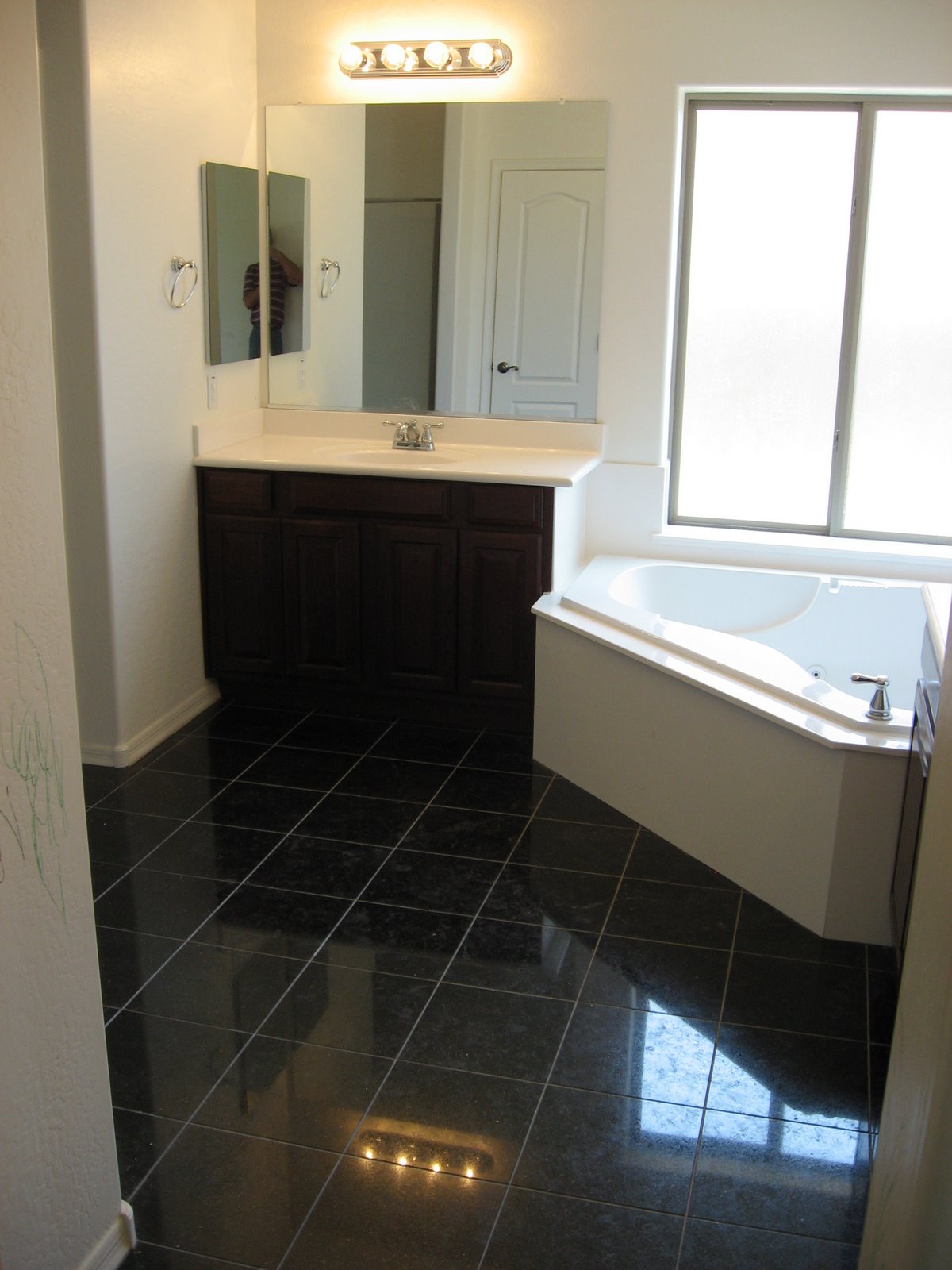
It is a natural stone, an igneous rock, formed from cooled lava and magma and hence is rich in mineral content. Regarded as the queen of stone flooring, a few of the minerals include silica, quartz, feldspar and mica and amphibole minerals.
They are available in gray, pink and white colours. It is widely used in kitchens, hallways and even semi-outdoor spaces specially courtyards and home gardens.

advantages of Granite Flooring
- Robust; hardest of natural stones
- Can last a lifetime
- Available in a variety of colours and patterns
- Resistance to scratching and chipping
- Durability to acid and rough usage
- High resistance to stains and burns.
- Bacteria resistant
- Easy to clean
- Perfect alternative for warmer places as the stone feels cold underfoot
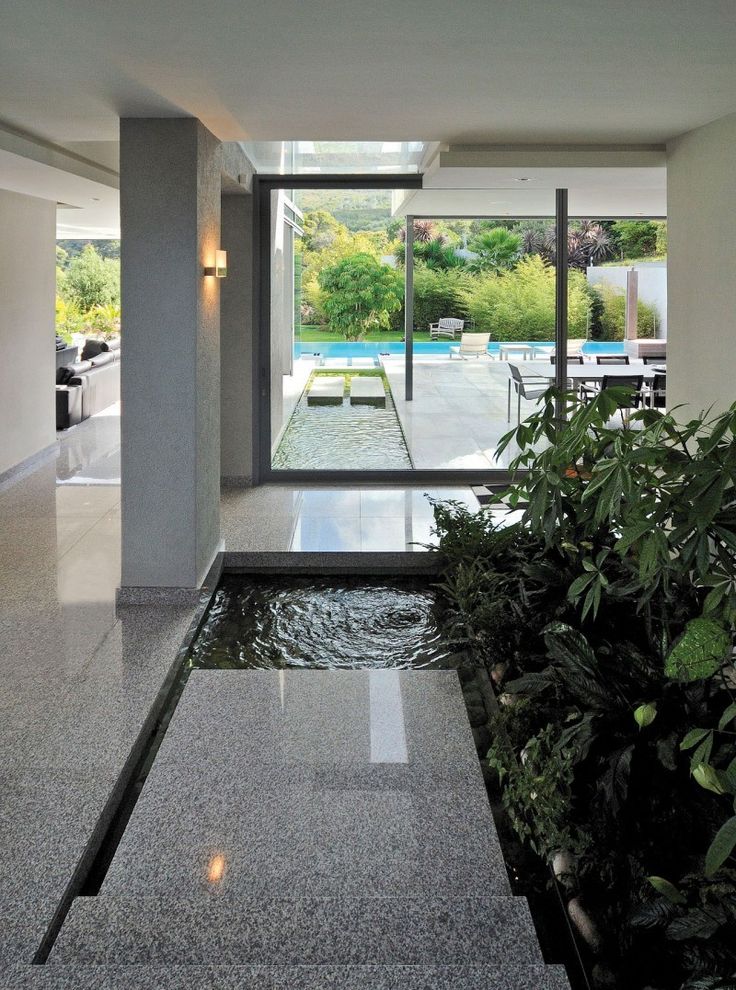
Disadvantages of Granite Flooring
- Heavy; needs resilient subflooring to bear its weight.
- Doesn’t have the warmth of wood, and other flooring materials.
- Its installation charges are quite high
- Should be properly sealed to become water and stain resistant.
- Non-renewable
- Difficult to stand on for long hours due to its hardness
- Easier to sustain injuries if someone falls on the floor because it is rather firm.
- Proves to be slippery when highly polished
3. Marble as Flooring Material

Marble is a metamorphic stone, formed under intense heat and pressure that ultimately transforms the rock composition. It is a soft rock, with a porous nature. For flooring purposes, it is mostly used in the living rooms, bedrooms and bathrooms. Suitable for almost any space of your house that you wish must be eye-pleasing and well-maintained; they are also a really good choice for living rooms and foyers. Marbles are an elegant preference to go for and score high on aesthetics. Italian marbles are available in several varieties like Dyna, Baltic Brown, Blue Pearl, Jet Black, Corana Cream, English Talk, Italian Beige, Imperial Gold and so on.
Advantages of Marble Flooring
- Durable and scratch resistant
- Can last for ages.
- The design patterns available are exquisite and are one of the most elegant flooring styles.
- Most of the Italian marble slabs are resin impregnated which provides a more hygienic surface than other materials.
- Easy to clean
- Provides a good indoor air quality as it does not catch allergens.
- Have the advantage of a wide range of colours
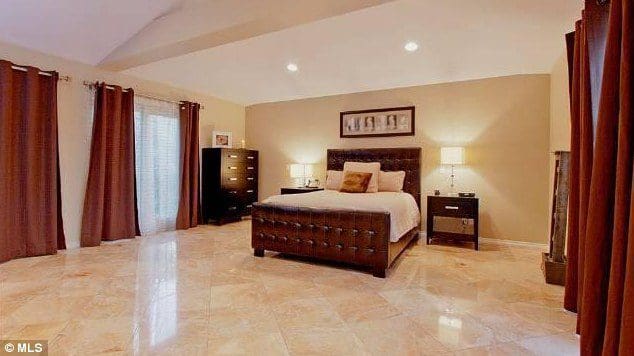
Disadvantages of Marble Flooring
- If not cared for with diligence, the marble surface may get scratches, leading to its deterioration.
- Requires regular resealing and polishing to retain its beauty.
- If uncoated, the flooring may get stains easily and become darker.
- Feel cold underfoot
- Hard; may sustain injuries
- Expensive
- Slippery in nature.
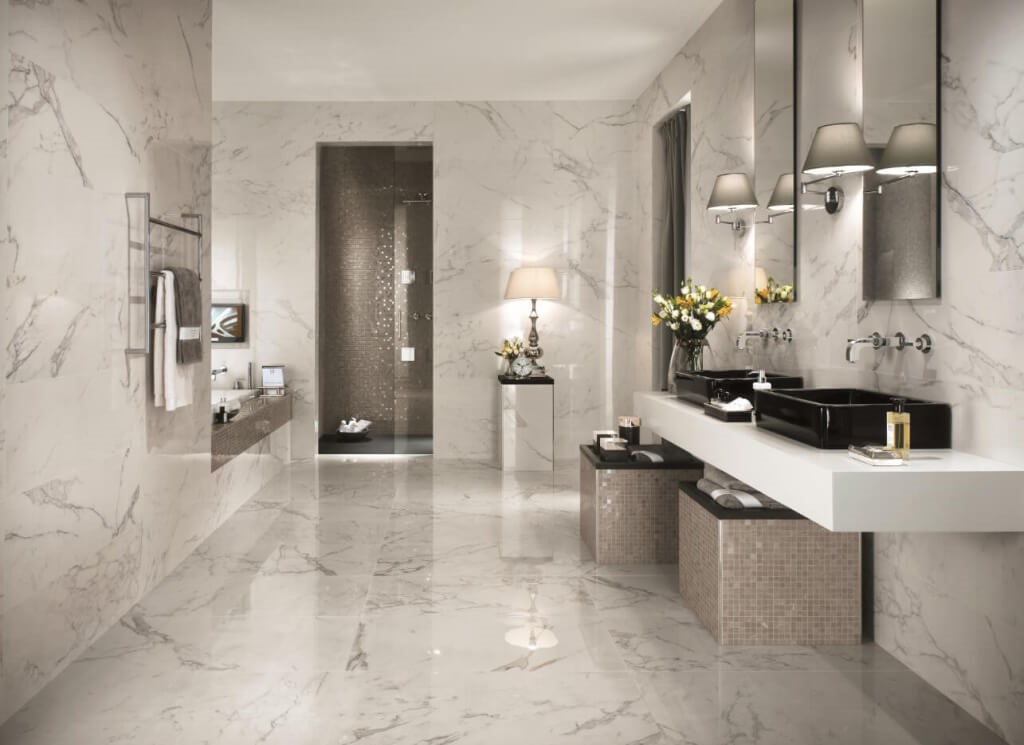
Comparison Among vitrified Tiles, Granite and Marble Flooring
| Specification | Vitrified Tile Flooring | Granite Flooring | Marble Flooring |
|---|---|---|---|
| Definition | It is a man-made ceramic tile, made by hydraulic pressing a mixture of clay, quartz, feldspar, silica. | It is a natural stone, an igneous rock, formed from cooled lava and magma and hence is rich in mineral content like silica,quartz,feldspar and mica. Characteristically dark in colour | Marble is a metamorphic stone, formed under intense heat and pressure that ultimately transforms the rock composition. It is a soft rock, with a fragile nature. Characteristically light in colour |
| Advantages | 1. Resistant to water and frost. 2. Available in various sizes, shape and pattern. 3. Can be used within 48 hours of laying. 4. Easy to clean. 5. Sunlight doesn’t cause them to fade. 6. Homogeneous in size, shape. | 1. Resistant to bacteria. 2. Available in various colours and pattern. 3. Durable to acid and rough usage. 4. Resistant to scratches and chipping. 5. Easy to clean. | 1. The design patterns are exquisite and are one of the most elegant flooring styles. 2. Most of the italian marble slabs are resin impregnated which provides a more hygienic surface than other materials. 3. Durable and scratch resistant. 4. Easy to clean. |
| Life span | Low lifetime than Granite and marble flooring. | Can last a lifetime. | Can last for ages. |
| Maintenance | Need less maintenance. | Need less maintenance. | Requires regular polishing to retain its beauty. |
| Cost | Cost with installation can be 110-155/- sft plus | Cost with installation can be Rs. 175- Rs.350/-sgft.plus | Cost with installation of indian marble can be 175- 350/-sft plus ,an imported/ italian marble installation can cost Rs. 600-Rs.2000/-sft plus |
| Availability | Easily available in lot of sizes, shapes, patterns and colors. | They have lesser choices and options in colours and pattern. | Have advantage of a wide range of patterns/features and shade |
| limitations | 1. Need to be taken care of to prevent flaking 2. Are slippery when wet unless having anti-skid feature. 3. Not environment-friendly product. 4. Wastages ranges from 5% to 10% 5. Invariably have bends 6. shade variations from lot to lot | 1. Heavy; needs resilient subflooring to bear its weight. 2. Doesn’t have the warmth of wood, and other flooring materials. 3. Should be properly sealed to become water and stain resistant.. 4. Proves to be slippery when highly polished ,should be flammed for anti-skid property. | 1. If not cared for with diligence, the marble surface may get scratches, leading to its deterioration. 2. If not properly sealed, the flooring may get stains easily and become darker. 3. Feel cold underfoot, issue in cold environment. 4. Expensive. 5. Slippery in nature. |
| Size and Thickness | Standard or Nominal size of vitrified tiles are 300*300,600*600,800*800mm | Usually sliced size of granite slab is 8’/7’ x 4’/5’ (can be cut into required sizes) and thickness of 16 to18 mm . | Usually sliced size of marble slab is 8’/7’ x 4’/5’ (can be cut into required sizes) and thickness of 16 to 20mm. |
| Special Character | 1. Prevent growth of bacteria and fungi due to moisture resistance. 2. Lots of choices available in colors, patterns/features. | 1.Strong and sturdy,. 2.highly impervious. Prevent growth of bacteria and fungi due to moisture resistance | 1. Perfect alternative for warmer places as marble feels cold underfoot. 2. Fashion statement. |
| Recommend area of installation | Flooring | Kitchen Platform, staircase, common area | Flooring, cladding |
So here we have before you the merits and demerits associated with each of the three options you are confused between – and we bet this must have helped you. When it comes to selecting the most suitable flooring material for your home interiors go for something that suits functionality, cost, required quality of aesthetics and texture. That’s it – and you are good to go!
 (+91) 7249196273
(+91) 7249196273

